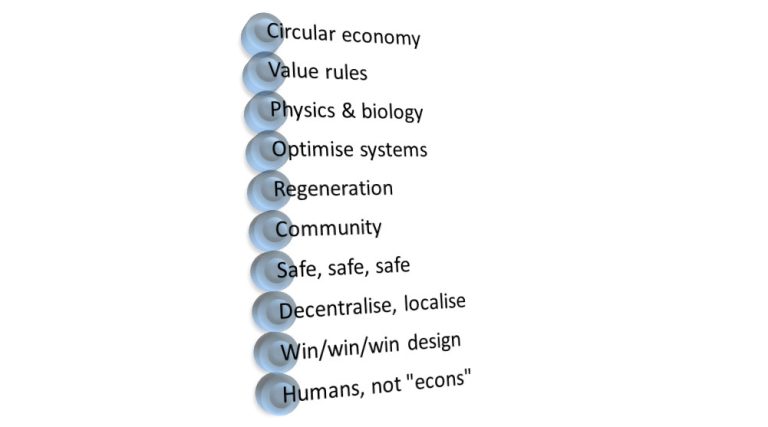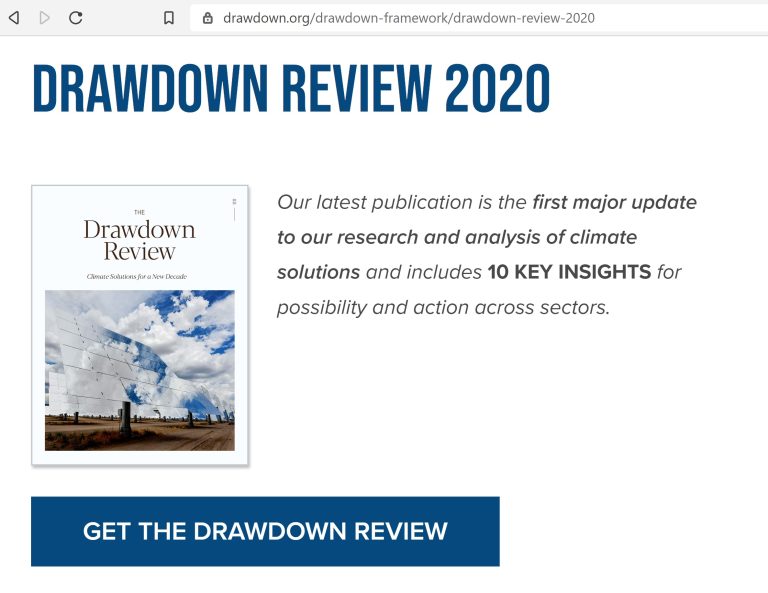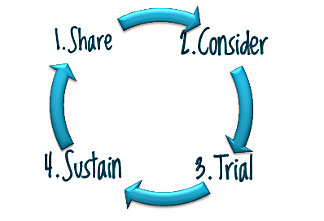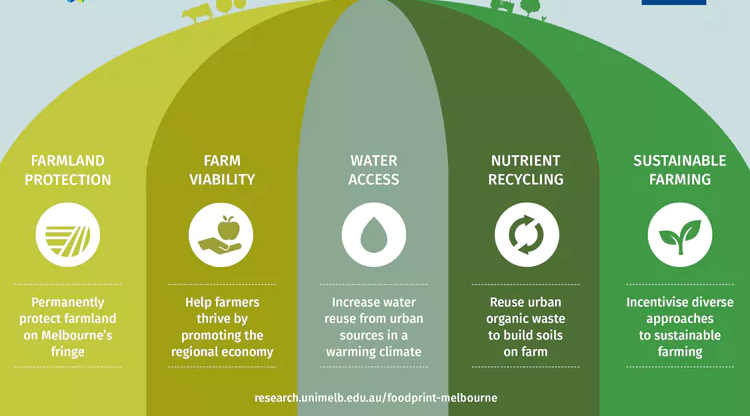Explaining climate solutions in 500 words
(My response to a LI challenge on climate – with “a jump to the right”)
Since humans moved in to cities several thousand years ago and away from immediate awareness of our host ecosystems, we’ve pretty much been treating those ecosystems – the biophysical systems that deliver our food, water, air and weather – as infinite.
What we now know in the third decade of the 21st century is that the biosphere – the 20km thick layer of ocean, land and air we exist within – is actually:
- Finite
- Fragile
- Degrading
As diagnosed by experts such as Hawken, Lovins, Elkington, Pauli, McDonough and many others, the fundamental design issue behind most of the harms is the unspoken “infinite nature” worldview underlying the extractive industrial and supply systems that design, build and deliver the products and services we use every day.
This worldview has resulted in extractive, polluting, 1-way mine/make/use/dump systems, processes, materials and products that have already breached SIX of nine fundamental biophysical boundaries. The destructive outcomes resulting from this worldview range from climate change to ocean plastics.
Mainstream industries – and the governments regulating their worst excesses – appear to have done their best to avoid the design challenges of this inconvenient reality since the 1950s.
However, the world’s inventors, innovators and entrepreneurs have been developing, commercialising and scaling smarter, cleaner, safer solutions for decades. Their activity level ramped up in the late 1990s as they saw increased high-impact opportunities.
The result is that in the third decade of the 21st century we have:
- Hundreds of practical, commercial, job-rich, regenerative solutions available today.
- Increasing modelling confirming the economic, social and ecosystem benefits of those solutions.
- Supporting design approaches enabling industry to scale hundreds more commercial, regenerative solutions.
- A wide range of smart innovation delivery tools available to accelerate the take-up of today’s solutions.
- A global Internet enabling anyone with access to participate in today’s solutions.
A quick sampling of today’s solutions
Project Drawdown has catalogued and modelled 93 commercial, evidence-based solutions scaling globally – actionable by industry and goverrnment today – that offer savings of $80-$140 trillion.
Project Regeneration’s Action Nexus lists 82 solution spaces actionable today that make the world better today that are open to immediate action by individuals, communities, SMEs and regions.
The Ellen Macarthur Foundation for the Circular Economy offers a free Circular Design Guide to design and implement more no-regrets, regenerative solutions – with multi-trillion dollar benefits.
Cradle to Cradle Product Innovation offers design processes for health-full process and product solutions.
Biomimicry-based design approaches offer a whole new approach to designing products and processes – also with trillion-dollar benefits.
New knowledge bases from Diffusion of Innovation to Systems Thinking offer smarter approaches to both solutions design and solutions delivery.
What does this mean for the average Western citizen?
It means that – while your individual purchasing and consumption choices taken in isolation can only have limited impact on global issues – you can participate in scaling today’s commercial, systems-changing solutions today – as an individual, in your community, in your industry and through your regional administration.







